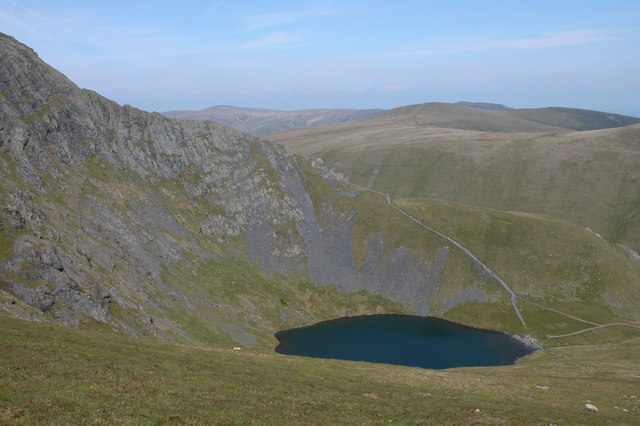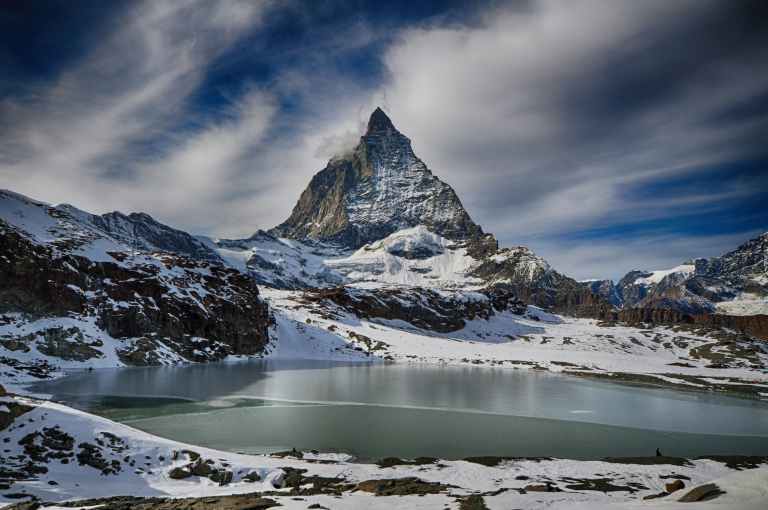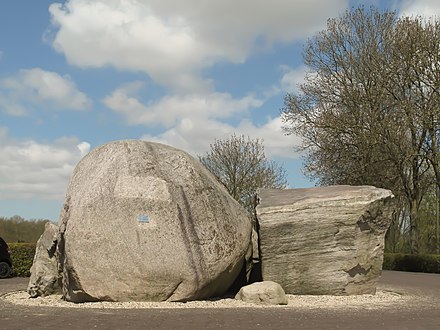Glaciers are responsible for shaping various landforms through their movement and erosion over long periods of time. Here are some of the primary landforms created by glaciers:
1.U-shaped Valleys:
Glaciers carve out valleys in a distinctive U-shape. As a glacier moves down a valley, it deepens and widens it through the process of erosion, creating a characteristic U-shaped cross-section.
 |
| A U-shaped valley forms when a glacier moves down a mountain valley. After the glacier recedes, the U-shaped valley is left behind. Photo by Stephan Seeber |
2.Cirques:
These are bowl-shaped hollows found at the head of a glacier. Cirques are formed when a glacier erodes the surrounding mountainsides, creating a steep-walled, amphitheater-like feature.
 |
| A small tarn, found within a cirque. Scales Tarn and Sharp Edge, Blencathra by Philip Halling |
3.Aretes:
When two adjacent cirques erode back into a mountain, they can form a sharp ridge known as an arete. Aretes are typically narrow and can have steep sides.
 |
| Long ago, an arête like this one separated two valley glaciers. Carn Mor Dearg Arete by David Crocker |
4.Horns:
A horn is formed when several glaciers erode a mountain from different sides, resulting in a pointed peak. The most famous example is the Matterhorn in the Alps.
 |
| The Matterhorn in the Alps is a great example of a horn. Photo by Pixabay |
5.Moraines:
Moraines are accumulations of rock, sediment, and debris that are transported and deposited by glaciers. They can be found along the sides, within, or at the terminus (end) of a glacier. There are different types of moraines, including lateral moraines (located along the sides), medial moraines (formed when two glaciers merge), and terminal moraines (deposited at the farthest extent of a glacier).
 |
| Terminal moraine by Rob Burke |
6.Glacial Erratics:
These are large boulders that are transported and deposited by glaciers. Erratics can be found in areas that are different from the rock types of the surrounding landscape, indicating the long-distance transportation by ice.
 |
| Glacial erratics from Norway on Schokland in the Netherlands |
7.Drumlins:
Drumlins are elongated, teardrop-shaped landforms formed by the deposition of glacial till (sediment) underneath the ice. They typically have a steep, blunt end facing the direction of the glacier's movement and a gentler slope on the opposite end.
 |
| Drumlins have one steep end and one smooth, elongated end. Drumlin country by Gordon Hatton |
8.Eskers:
Eskers are long, winding ridges of sediment deposited by meltwater rivers flowing within or beneath a glacier. They are composed of sand, gravel, and other materials that were carried and deposited by the water.
 |
| Esker in Glen Lednock by Gordon Brown |
9.Kettle Lakes:
Kettle lakes are formed when a block of ice, known as a glacial erratic, becomes buried by glacial till. As the ice block melts, it leaves behind a depression that fills with water, forming a kettle lake.
 |
| Devil’s Lake in Wisconsin is a classic example of a kettle. |
These are just a few examples of landforms shaped by glaciers. Glacial processes can have a significant impact on the Earth's surface, sculpting landscapes in remarkable ways.
